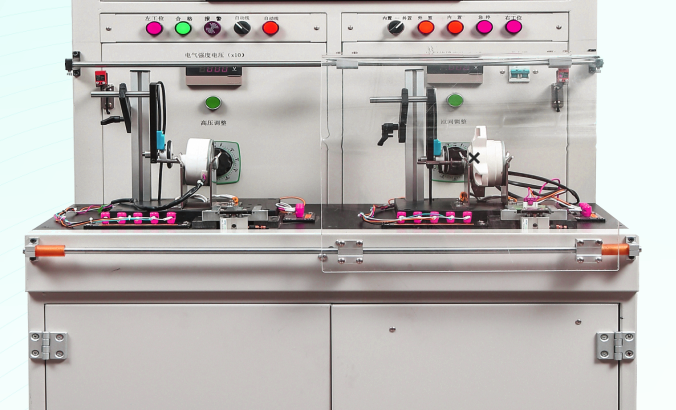How to fault analyze and troubleshoot the brushless motor motor automatic no-load tester?
Brushless motor motor automatic no-load tester failure, you can from the mechanical, electrical, software and other aspects of fault analysis and troubleshooting, the following is the specific method:
First, the mechanical part
1、Motor can not be fixed or fixed
Failure analysis: it may be fixture damage, fixture size mismatch or clamping device failure.
Troubleshooting: Check whether the fixture is deformed, broken, etc., if any, then replace the fixture; confirm the size of the fixture and the motor is appropriate, if not, replace the appropriate fixture; check whether the mechanical transmission part of the clamping device is stalled, whether the motor is damaged, the stalled parts of the cleanup and lubrication, the replacement of damaged parts.
2、Abnormal transmission device
Failure analysis: the belt may be loose, worn or broken, the gear may be worn, missing teeth or poor meshing, the coupling may be loose, damaged.
Remedy: adjust the belt tension, wear or broken belt should be replaced in a timely manner; check the gear wear, serious wear or lack of teeth gear replacement, adjust the gear mesh clearance; tighten the coupling connection bolts, the coupling of the damaged parts for replacement.
Second, the electrical part
1、Power failure
Failure analysis: the power plug may be loose, power cord damage, power switch failure, fuse blown or power module failure.
Troubleshooting: Check whether the power plug is plugged in tightly, whether the power cord is broken, disconnected, etc., if there is a problem, then repair or replace the power cord; check whether the power switch can be normal on and off, bad on the replacement of the switch; check whether the fuse is blown, if blown, to find out the reason and replace the fuse; test whether the output voltage of the power module is normal, abnormal repair or replacement of the power module.
2, sensor failure
Failure analysis: the sensor may be due to long-term use of aging, damage, or sensor connection line is loose, broken, may also be the sensor installation position offset.
Troubleshooting: Use professional instruments to detect the performance of the sensor, aging or damaged sensor replacement; check whether the sensor connection line is in good contact with the loose interface for fastening, repair or replacement of broken lines; re-adjust the sensor's mounting position, to ensure that it is firmly installed and measured accurately.
3, motor drive failure
Failure analysis: the components in the drive circuit may be damaged, such as power tubes, capacitors, resistors, etc., or drive chip failure, may also be driving the signal transmission line problems.
Troubleshooting: Use a multimeter and other tools to detect whether the components in the drive circuit is damaged, replace the damaged components; check whether the operating voltage of the driver chip, reset signal, etc. is normal, if the chip is damaged, then replace it; check whether the drive signal transmission line is disconnected, short-circuit and other conditions, repair or replace the line.

Third, the software part
1, test software failure
Failure Analysis: It may be incompatible with the software version, software file damage or loss, software setup errors.
Troubleshooting: Confirm whether the test software is compatible with the operating system and hardware equipment, upgrade or replace the software version if it is not compatible; reinstall the test software, repair or replace the damaged or lost files; check whether the setting parameters of the software are correct, such as test parameters, communication parameters, etc., and adjust them according to the actual situation.
2、Communication failure
Failure analysis: it may be damaged communication interface, communication line failure, communication protocol setting errors or interference problems.
Troubleshooting: Check whether the communication interface is loose, oxidation, etc., repair or replace the damaged interface; check whether the communication line is broken, short-circuit and other problems, repair or replace the line; confirm that the communication protocol settings are matched with the equipment, incorrectly adjusted; check whether there is a strong source of electromagnetic interference around the ground to take shielding, grounding and other anti-interference measures.
※ If you still can't solve the equipment failure by the above ways and means, please contact the technical specialist of Xinhui Electromechanical Equipment Co.







